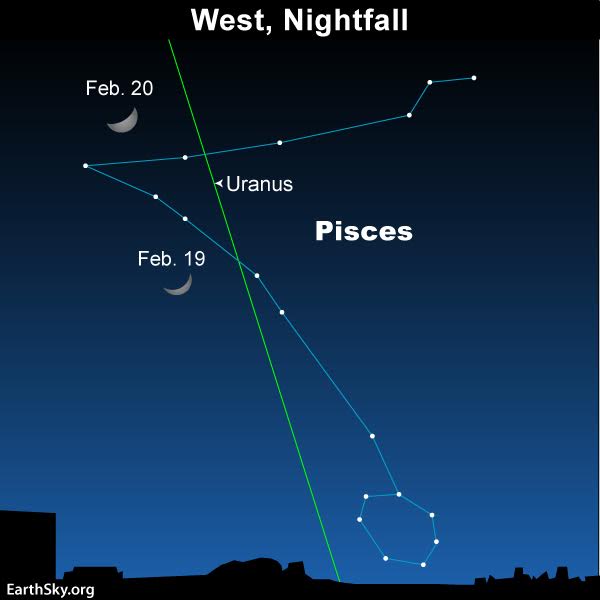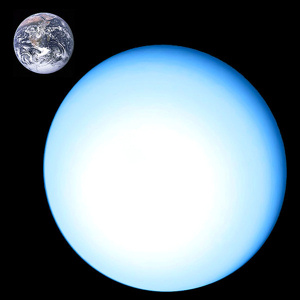
On February 19 and 20, 2018, the waxing crescent moon and planet Uranus both lie in front of the constellation Pisces the Fishes. It’s best to look for Uranus when the moon is out of the way. Use the moon’s location to identify the faint V of Pisces Monday or Tuesday evening, then wait for the moon to move away to look for Uranus.
On a dark, moonless night, people with extraordinary vision do sometimes spot Uranus as a faint speck of light with the unaided eye. You’ll have better luck looking for Uranus with binoculars. A good familiarity with Pisces and a detailed sky chart come in handy. Uranus is currently located inside the V of Pisces. It’s fairly near the bottom tip of the V. Look on the star chart below. Do you see the faint 4th-magnitude star Omicron Piscium? It’s visible to the unaided eye in a dark sky.
Then look for the planet Uranus in the same binocular field as Omicron Piscium.

You’ll find other useful charts on these pages:
Uranus and Neptune through March 2018, from SkyandTelescope.com
Path of Uranus till January 2019, from NakedEyePlanets.com
Uranus information on The Sky Live
Uranus is a mighty gas or ice giant planet in the outer solar system. It is much, much larger than our moon. Uranus resides about 20.5 astronomical units away from Earth.
That’s nearly 8,000 times farther than tonight’s moon.

The moon will pass out of constellation Pisces and into the constellation Aries after a day or two. But Uranus won’t move into Aries until May 2018, at which time Uranus will have moved into the morning sky.
Uranus is the 7th planet outward from our sun. It was the first the planet to be discovered via a telescope. With Sir William Herschel’s discovery of Uranus in 1781, Saturn no longer marked the outermost point of the solar system. All of a sudden, the diameter of the known solar system doubled from 10 to 20 astronomical units.
Bottom line: On February 19 and 20, 2018, the waxing crescent moon shows you the approximate position of planet Uranus on the sky’s dome.











